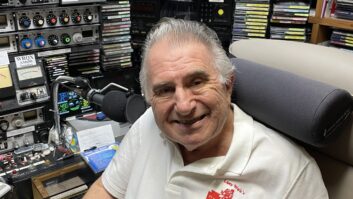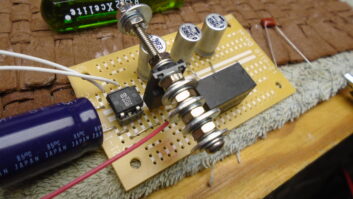In the March 29 issue we talked a bit about those high-end “home theater” stores, with their speaker cables that are $10 per foot. Of course, those are “entry-level” speaker cables, for beginners whose ears are not tuned (or is it “burned in” – I can never remember).
The ultimate for me was some speaker cables I saw at the Consumer Electronics Show in Las Vegas a couple of years ago. If you ever have a chance to go to that show, don’t miss it. Makes NAB look like a clambake! Last year 146,000 people were at the show. And you see the weirdest stuff.
Pump it up and out
These speaker cables were, I kid you not, vacuum-filled speaker cables. They were $10,000 a pair and were big hoses, with all the air pumped out. There were valves at each end, but don’t turn them. If you did, air would rush in and air, as we know, is not as good a dielectric as a vacuum. Vacuum is the ultimate. So, of course, you could hear the difference.
For 10 grand you’d better hear a difference!
The problem with this is that a vacuum has, by definition, a dielectric constant of 1. And air, which is mostly nitrogen, has a dielectric constant of 1.0167, darn close to 1.
So we broadcasters are missing the boat here. Obviously, we need to show up at CES with some nitrogen-filled speaker cables. I need a big tank in my home theater. Or how about a dry air compressor on your speaker cables? And we do that all the time.
Hey, you want low resistance. How about hard line as speaker cable? I can just see the mounting hardware in my living room. Of course, I would have to start looking for another wife, but the sound would be amazing, right? No?
Because, as you well know, this is all marketing, not science.
This is the problem I have when I go to CES. I talk engineering, they talk marketing. It’s like being in a foreign country.
And the real problem is that these exhibitors truly believe that they too are speaking engineering-ese, because they have taken a grain of truth, such as dielectric constant, and taken it to absurdity. You can do that with any cable specification, resistance, capacitance, inductance, impedance, return loss, skin effect.
Measuring stuff
Oh, yes, all of these are real things. But many of them don’t even matter at audio frequencies. It’s like worrying about the aerodynamics of your golf cart.
And they think because it can be measured, well, then it makes a difference. But you broadcast engineers measure stuff all the time. And you know before you do what is and isn’t important, what does and does not make a difference.
How can we communicate this to our friends in the consumer electronics world?
I remember back in 1964 (which dates me) when a company that made test gear, NLS, Non-Linear Systems, decided to bring out an FM receiver. This was a piece of home equipment built like a professional piece of gear. It was truly amazing. It was easy to open up. There was a motherboard with modules that plugged in, which was unheard of at the time. You could hot-swap all the cards. When you took out the stereo decoder board, the receiver simply went to mono. And it had nixie tube digital readouts on the front panels showing the station you were tuning to, signal strength, everything. Nobody had ever seen anything like it.
So what happened? It was the biggest flop in the hi-fi world that year. Sure it was expensive. You could drop the thing and it would just keep on working. But it looked like test gear, not some spaceship, and nobody was interested.
So sadly, if we tried the same thing today, if Tektronix or Agilent brought out a DVD player or power amp, it would be a compete dud in the consumer world. The reason? No pseudo-science, no marketing. They would be relying on something unheard of in the consumer world: the truth!
I will now get off my soapbox until next time.












